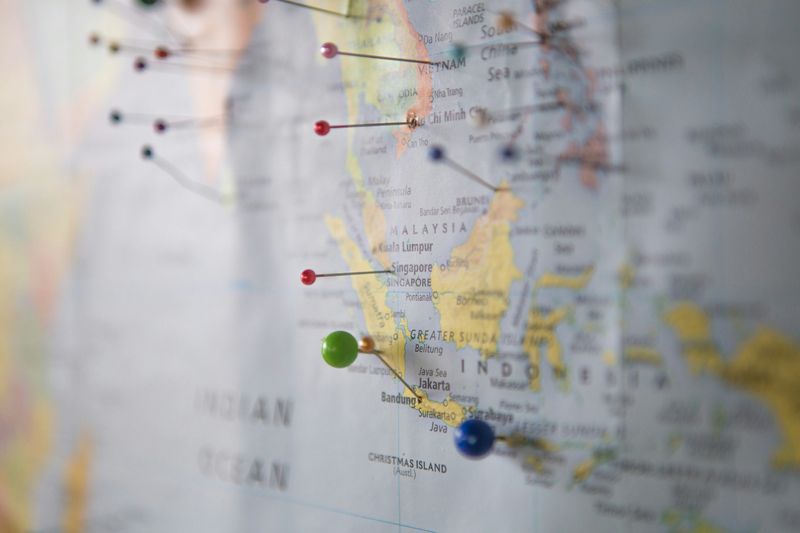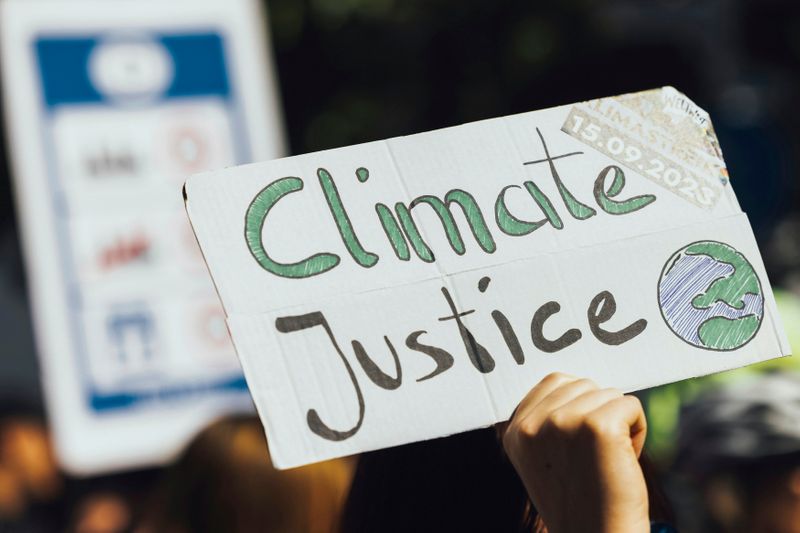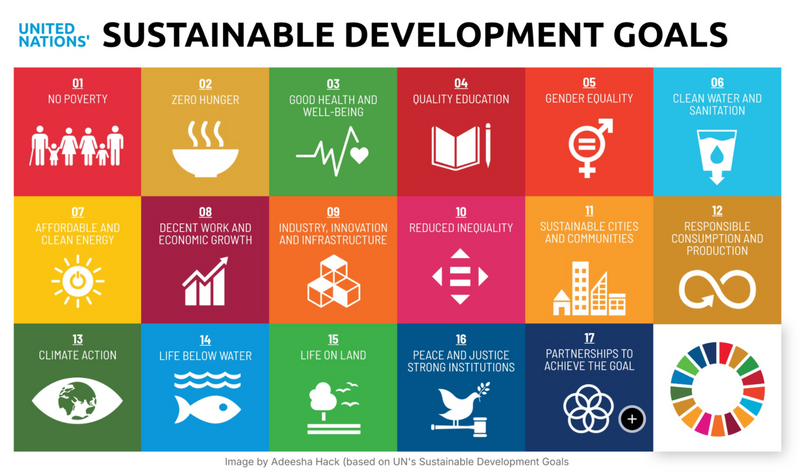Brainstorm: think of current issues facing the world.
 Photo by Z on Unsplash
Photo by Z on UnsplashAfter your brainstorm, consider the following questions:
Which three issue(s) do you think are most important?
Why are these issue(s) important?
The United Nations adopted 17 goals, called the Sustainable Development Goals, meant to address the most urgent global issues.
Knowing about the SDGs gives you the information necessary to be an informed global citizen. This allows you to participate in discussions, decisions, and actions that can improve your community, your country, and the world.
What Are the United Nations' Sustainable Development Goals?
The United Nations' Sustainable Development Goals (SDGs) are a collection of 17 global goals, which were created in 2015. These goals were created to combat urgent global challenges such as poverty, inequality, climate change, and environmental degradation.
The video below explains each goal:
Importance of the SDGs
 Photo by Markus Spiske on Unsplash
Photo by Markus Spiske on UnsplashThe creation of the SDGs is important because they:
Address global challenges
The SDGs tackle critical global issues like poverty, hunger, inequality, and climate change, which affect people and the planet.
Have universal application
The SDGs are relevant for all countries and individuals, whether rich or poor.
Take a holistic approach
The SDGs promote a comprehensive approach to development, recognizing that social, economic, political, and environmental issues are connected.
Have long-term vision
The SDGs encourage countries, businesses, and individuals to think beyond the short-term. Rather, these goals work towards long-term solutions for the well-being of future generations.
In short, the SDGs are important because they provide a plan for addressing the world's most pressing challenges, while ensuring a fair and sustainable future for everyone.
How the SDGs Are Connected
Often the SDGs are taught in isolation. However, they're interconnected. Progress in one goal often supports or influences progress in others.
 To hear an audio description of the image above, select the play button on the audio player below:
To hear an audio description of the image above, select the play button on the audio player below:
The following are examples of how goals can be connected:
No Poverty (Goal 1) is tied to Zero Hunger (Goal 2), as poverty reduction helps improve access to food.
Quality Education (Goal 4) leads to better economic opportunities, supporting Decent Work and Economic Growth (Goal 8).
Gender Equality (Goal 5) enhances progress in Good Health and Well-being (Goal 3) and Reduced Inequalities (Goal 10).
Climate Action (Goal 13) influences Life Below Water (Goal 14) and Life on Land (Goal 15) by promoting environmental protection.
Each goal reinforces the others, creating a holistic approach to the development of individuals, communities, and countries.
Your Turn: Connect the SDGs
Review the list of the Sustainable Development Goals in the previous section:
How does one goal influence/connect to another goal?
How does one goal influence/connect to more than one goal? Can you connect 3 goals? What about 4 goals? More than 4? Make as many connections as you can.
For example:
How can Quality Education (Goal 4) influence No Poverty (Goal 1); Zero Hunger (Goal 2); Good Health and Well-being (Goal 3); and Decent Work and Economic Growth (Goal 8)?
 Photo by Sigmund on Unsplash
Photo by Sigmund on UnsplashQUIZ: How can SDG 4 (Quality Education) influence SDG 5 (Gender Equality)?
A. Education gives boys and girls the same chance to learn, which allows girls to get good jobs, make money to support their families, and advocate for themselves.
B. Education is only about school subjects and doesn’t really impact other goals.
C. Education may help students think about different jobs they could obtain, but it doesn’t change gender roles or give girls an advantage in society.
D. Education connects to a better community, but in a very limited way.
Quiz
How can SDG 4 (Quality Education) influence SDG 5 (Gender Equality)?
Take Action

Your feedback matters to us.
This Byte helped me better understand the topic.
